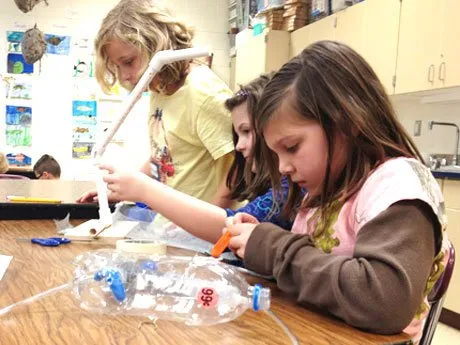Our Planet Activities and Fireworks
September 16-20

Workshop Activities
1. Craft – Crack Open Geodes
2. Key Points – Our Planet
3. Collaborative – Global Scavenger Hunt – Label Land Formations
4. Language Arts - Capitalization
5. Math/Logic – It's Elemental – Chart the elements in our world
6. Character Connection – Dinosaurs of the World
7. Big Activity – Hard Rock – Experiment With Hardness Scale
8. Movement – Game: Rock, Rock, Who's Got the Rock?
Minecraft Activities
Rocks Bingo
Land Formations
Layers of the Earth
Build Challenge: Rock Cycle
Upcoming Events
Thursday Park Days at Santa Ana Zoo: https://www.facebook.com/events/479026312918466/
Disneyland meetup: October 8 – Ancient Ologies https://www.facebook.com/events/438347327015581/
October 21: Field Trip at Aquarium of the Pacific, Celebration, and overnighter at the aquarium – watch for details!
Fireworks
Read through the fireworks and choose about five that you think might interest your child. Allow him or her to select 1-3 of them.
Explore the earth's insides: http://www.learner.org/interactives/dynamicearth/index.html
Make a sundial: http://www.skyandtelescope.com/letsgo/familyfun/Make_Your_Own_Sundial.html
Play some capitalization games:
http://www.sheppardsoftware.com/grammar/capitals.htm
http://teacher.scholastic.com/activities/adventure/grammar2.htm#
http://www.henryanker.com/4th_Activities.html (scroll down)
Find Decorative Rocks. Watch for examples of different kinds of rocks used for practical purposes. Look at buildings and monuments for blocks of the igneous rock granite, the sedimentary rock sandstone (or brownstone), and the metamorphic rock slate. Look at museums and public buildings for examples of the metamorphic rock marble, used in many floors, monuments, and statues. Make a chart to record the kinds of rock you see, where you found them, and for what purposes they are used.
Track the Weather. Each day for a month, look up the daily weather forecast. Graph the average daily temperatures, precipitation, and sky conditions for the month.
Local Geology - Investigate what types of rocks and rock formations are common in your area. Take photographs or draw pictures of nearby rock formations. Determine what kinds of rocks you have photographed or illustrated. See if you can figure out how those formations were most likely created then write captions for your pictures. You can compile your pictures and captions onto a poster or a binder or use them to create a multimedia presentation.
Weather Folklore - Consider some weather-related folklore you may have heard, such as "Ring around the moon, 'twill rain soon" and "Red sky at night, sailors' delight”; “red sky at morning, sailors take warning." Select and research one such saying with an eye toward investigating its accuracy in predicting the weather.
Play some math games.
Make a bumpersticker that says, “Living on Earth is expensive, but it includes a free trip around the sun.”
Categories - Determine what a rock, an element, a mineral and a gem are. How are they similar? How are they different?
Map the ten largest earthquakes on a map of the world.
Do some earthquake puzzles:
http://www.edhelper.com/Earth_theme12.htm
http://www.thepotters.com/puzzles/kids/earthquakes.html
Memorize this song: https://youtu.be/G7xFfezsJ1s
Read fiction or non-fiction about the earth.
Assemble a 72-hour kit that your family can use in the event of a disaster.
Do some earthquake math:
http://mathcentral.uregina.ca/beyond/articles/earthquakes/earthquakes.html
http://go.hrw.com/resources/go_sc/hst/HSTMW431.PDF
Visit a local volcano.
Write the story of the life of a rock. Make it an interesting story – not just a boring rock story!
Track current earthquakes for one week. Make a diagram to show the results of your earthquake watch. https://earthquake.usgs.gov/earthquakes/map/
Know what to do during an earthquake.
Design an island that features ten different land formations.
Make a model volcano.
Go on a rock hunt. How many different kinds of rocks can you collect and identify? Start a rock collection.
Experience an interactive animation of the rock cycle: http://www.classzone.com/books/earth_science/terc/content/investigations/es0602/es0602page02.cfm
Sketch or paint diagrams of Pangaea, the layers inside the earth, the earth’s tectonic plates, or the inside a volcano.
Field Trip Ideas
Jurupa Mountains Cultural Center: http://jmdc.org/
Go to a gem and mineral show.
Clark Park: http://ocparks.com/parks/ralph/interpretive




















